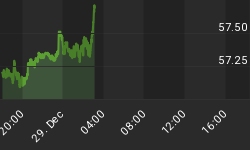The early results for third quarter earnings do not look too encouraging. Over the past couple of months, earnings estimates dropped from 4.1% at the end of August to -0.4% currently. Earnings were expected to increase 5.7% when the quarter started. Even though the bar was lowered, companies are missing estimates at a higher rate than last year. Of the 71 S&P 500 companies that have reported, 22.5% have missed earnings estimates. Last year at this time, only 5.9% missed estimates. Of the companies that have reported, earnings in aggregate are up only 0.2%. The dynamic of larger companies performing better has continued. On a market cap basis, instead of share-weighted, earnings are up 10.3%. The weaker dollar continued to help multi-nationals during the third quarter and will likely continue to aid companies for the foreseeable future.
A large reason for the slowing consumer discretionary sector is due to the homebuilders. D.R. Horton reported preliminary orders fell 39% during its fiscal fourth quarter and were down 48% in dollar terms. The cancellation rate jumped to 48% from 38% just three months earlier. These results were similar to those Centex reported last week.
Housing starts dropped by 136,000 annualized units to 1.191 million. This marked a new fourteen-year low. Building permit data was not any better. The number of building permits issued dropped by 96,000 to 1.226 million annualized. Homebuilders are now the most pessimistic they have been since at least 1985. The National Association of Home Builders reported that its index that measures homebuilder optimism fell to the lowest level since it was created in January 1985. Of the three components used to calculate the headline number, the index measuring future sales was flat in October. Present sales and buyers traffic both dropped two points to 18 and 15, respectively. The Midwest was the only geographic area to show a rebound, but it was from 13 to 15, so still very weak - 50 marks the level if the market is contracting or expanding.
Other companies have started to feel the ramifications of the slowing housing market. A.O. Smith, maker of water heaters, said that "we are still having revenues below what our plans were for the year because the market is a lot softer." Caterpillar's CEO, James Owens, said that the U.S. housing market is the worst since World War II and will likely get worse next year.
While commercial construction has been able to offset a significant amount of the weakness in residential construction, evidence continues to mount that that run might be over. Fastenal, a distributor of metal fasteners, had some interesting color on the construction market.
It [non-residential construction] seems to be slowing some, job starts are not where they were, but there are certain areas that are real hot, energy is red hot, the ethanol especially in the Midwest where we operate is very good, but fewer office buildings and some of the other things, so it's more mechanical that the petrochem is still going well on the non-res. From a large manufacturing perspective, our big customers and our big suppliers, all of them are very cautious. Most of them are doing very well on an international basis, and that's what's driving their numbers, but their North American businesses are slow and I talked to a lot of the leaders of these businesses and they are very cautious saying what's going to go into 2008?
United Technologies expressed the caution that Fastenal alluded to. During its conference call it said that non-residential construction may slow during the second half of 2008 and cited F.W. Dodge's forecast that the non-residential construction market will be down 5% next year. However, during the Q&A segment it said it had not seen weakness yet.
The ICSC said the same store sales increased only 1.6% in September. Excluding April 2007 due to the Easter shift, this was the lowest increase since August 2004. While retail sales were relatively strong last September, at 3.8% it shouldn't be considered a "tough comp." That put the two-year stacked growth rate at 5.5%. Since the economy started to rebound in 2003, there have only been eight months where the two-year stacked growth rate was less then 5.5%. The first two weeks of October have not seen a meaningful rebound. The year-over-year gains were 2.1% and 2.5% during the first two weeks. The year ago comparisons do get easier for the rest of the year. Whereas the past eight weeks have been against increases of better the 3.5% in all but one week, the last ten weeks of the year, only two had higher than 3.0% increases last year.
While the headline number on retail sales from the government showed decent growth, up 0.6% in September, the year-over-year growth slowed to 2.9%. Additionally, if food and gasoline sales are excluded, retail sales only increased 2.2% compared to last September. Over the past four years, there have only been three months that have seen the data series increase less than 3% on a year-over-year basis. Current expectations are also muted. The National Retail Federation's first survey of holiday spending found that consumers plan on spending just 3.7% more than last year. This is more than a full percentage point below the ten-year average of 4.8%.
















